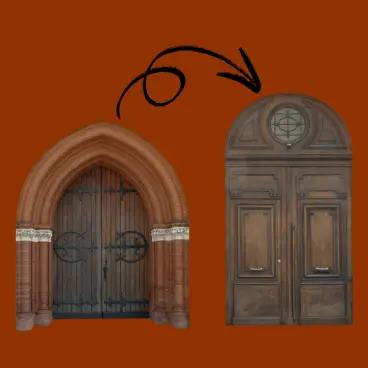The background of this research is that I have heard a lot of polarized and negative opinions about Clean Out, the reselling service offered by Remix.bg. There are a lot of claims, such as that Remix "loses" and "steals" clothes, as well as that the process is difficult and generally "not worth it". I decided to dig into this and investigate if there are any solutions to this and if there is an actual issue.
UX Research
Goal: Improve the adoption rate of Clean Out (% of Remix.bg users who also use Clean Out).
Type of research: From my perspective, it is foundational, as I don't have access to research and interviews that Remix has conducted, so I am just now getting to know the users.
From a business perspective, it is more of a tactical research, even though I won't be conducting usability testing and don't have access to quantitative data or A/B testing results.
Objectives
- To understand if there are many major frustrations with the Clean Out feature.
- To be able to come up with solutions to help people sell their clothes.
Research Questions:
| Who are we asking? | Research question | Why? |
|---|---|---|
| Current user of Clean Out | What do users like about Clean Out? | To be able to elevate the highest point of the user journey. |
| Current user of Clean Out | What do users dislike about Clean Out? | To understand if there are many major frustrations with the Clean Out feature. |
| Current user of Remix, but not of Clean Out | What would prevent users from selling their clothes via Clean Out? | To be able to come up with solutions to help people sell their clothes. |
| Current user of Remix, but not of Clean Out | What would change their mind towards wanting to sell via Clean Out? | To be able to come up with solutions to help people sell their clothes. |
| Current user of Remix, but not of Clean Out | What are the most important motivators and factors when buying SHC? | So that we can analyze if anything that makes them "tick" aligns with the possibility of users selling their clothes. |
Method
Due to this being a personal project with no funding and me having a full-time job, this would consist of just a few user interviews, and as an addition, I will dig into data from previous research conducted on the Bulgarian and European markets.
- Type: Interview
- Participants: 3
- Duration: 15-20 minutes per interview
- Location: Virtual, Google Meet
- Incentive: None
Participant Criteria
| Profile | Questions we hope to answer |
|---|---|
| Current user of Clean Out | What do users like about Clean Out? |
| What do users dislike about Clean Out? | |
| Current user of Remix, but not of Clean Out | What would prevent users from selling their clothes via Clean Out? |
| What would change their mind towards agreeing to sell via Clean Out? | |
| What are the most important motivators and factors when buying SHC? |
Recruiting & Screening
Recruiting was amateurish due to budget constraints. I wrote a post in a big Bulgarian Women-only Facebook group and asked if any of them were Remix users who would like to be interviewed to support my independent project.
| Who are we asking: | What are we asking? | Why? |
|---|---|---|
| Everyone in a group with Bulgarian women only | Are you using Remix.bg? | To screen out the ones that are not using Remix.bg |
| Are you willing to jump on an interview? | To screen out the ones that won't give their consent for an interview | |
| Remix users, who are willing to be interviewed | Have you used Clean Out? | To profile our participants |
Sample Size
Unfortunately, since this is an independent project, the sample size is "as many as I can get", so in this case 4 participants. 3 of them haven't used Clean Out.
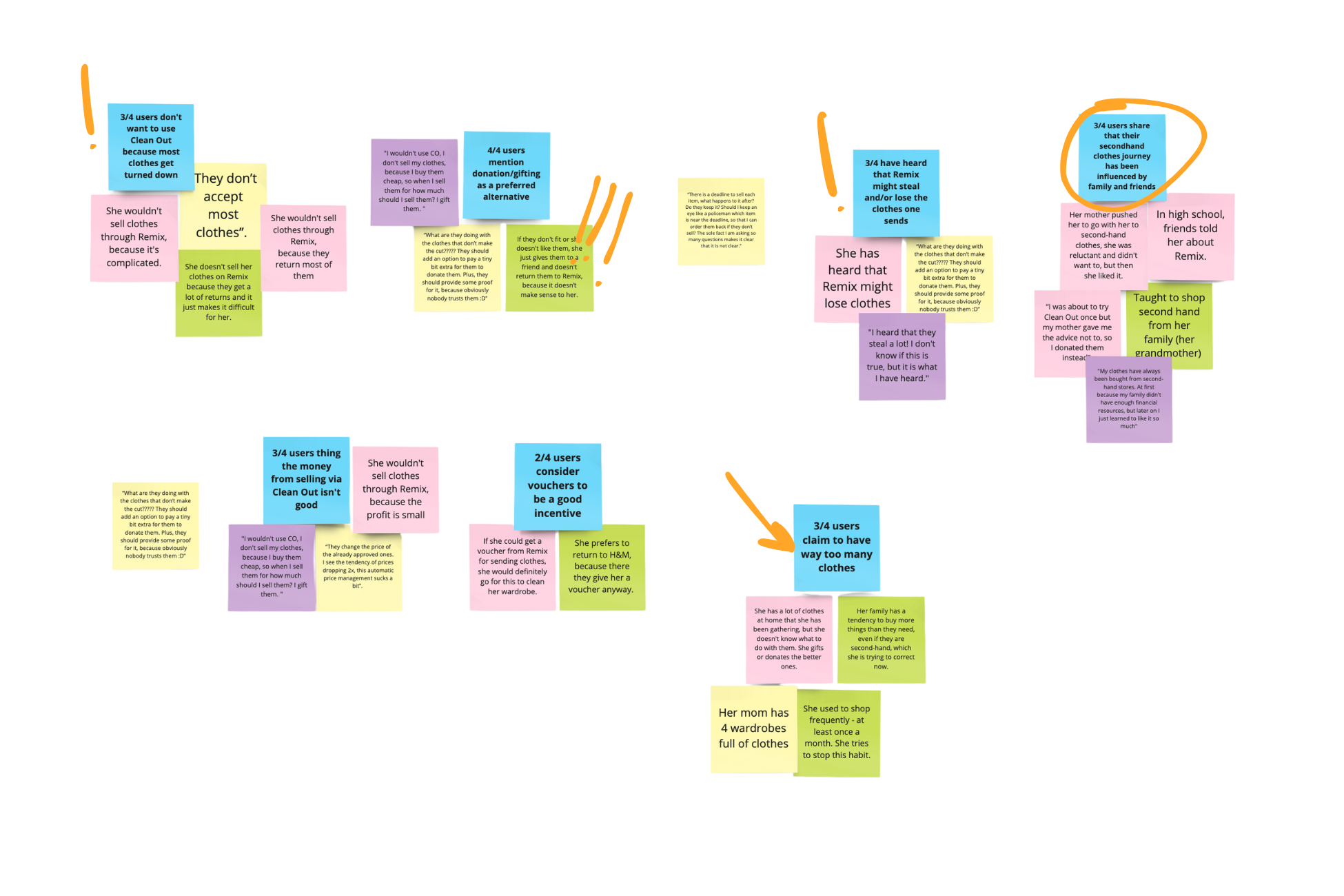
Research Findings
❗- Critical issue
⚠️ - Issue encountered
💬 - FYI
✅- Positive finding
1. Users find it difficult to want to use Clean Out (lack of "desirability"):
- ❗4/4 users consider Clean Out an option that doesn't make sense to them and prefer the alternative of donating or gifting clothes.
- ⚠️ 3/4 users mention that most clothes don't get approved when sent to Clean Out and this is a blocker to them. It costs time and money to get them back.
- ⚠️One user, but the only one who has actually used Clean Out, raised the issue that if items don't get sold it costs money to get them back and it is unclear what happens to them if one does not.
2. Users don't have a good enough incentive to use Clean Out (lack of "motivation")
- ⚠️ 3/4 users think there isn't a good incentive to use Clean Out, and the money they'd get is not good.
- The other user noticed a tendency of prices of approved items to drop 2x and doesn't appreciate the automatic price management.
- 💬2/4 users share that a voucher would be a good incentive.
- The user who has used Clean Out shared that if not a voucher, then the possibility to support a cause would also be a good incentive.
3. Users consider community factors as influential
- 💬 3/4 users share that they were influenced by friends or members of their family to shop secondhand clothes.
- ⚠️ 3/4 users share that they have heard people say they their clothes get stolen or lost after sending them to Clean Out.
Side findings:
- ⚠️ 3/4 users think the photos on Remix.bg's shop are not optimal
- 💬 4/4 users think the price-quality ratio is key when shopping secondhand clothes
- ✅ 3/4 users think the filtering functionality on Remix.bg's shop is really good
- 💬 3/4 users mentioned that fabric and quality are important to them
- ⚠️ The 1 user who has used Clean Out thinks that the item overview is very inconvenient as it groups the clothes by bag and there is no way to see them all
Recommendations
- 1. Revise how Clean Out compares to other alternatives and refine the presentation to emphasize ease.
- 2. Define a clear benefit of using Clean Out in the form of an incentive.
- 3. Incorporate community and UGC aspects into the product messaging and design. Involve PR to handle the claim of clothes being stolen.
Side recommendations: Make items more presentable by implementing a scalable solution to include photos of real people wearing the clothes.
Secondary Research
Well… only after I performed the first research, did I understand it has a fatal flaw. I had focused too much on the problems people have with Clean Out and their attitude towards handling clothes they no longer want/need. BUT I had no deep understanding of their own pain-points. And no, not their issues with Clean Out, but the problems that Clean Out should be solving, but does not. I had assumptions and hypotheses about them, but they were neither approved, nor disapproved.
I decided I can't continue without this really key information. So I thought about a voucher my previous participants would appreciate, I got one for each of them, then apologized and asked if they can fill out a questionnaire for me. My objective was to get a deeper understanding of their pain-points related to dealing with clothes they don't need/wear.
The result of this secondary research was an artifact - a persona named Mira.
- 3/4 people think they have many clothes they don't wear.
- All 4/4 want to clean their wardrobes.
- 3/4 people don't know what to do with the clothes they want to clean out.
- 3/4 people feel an emotional attachment to the clothes they want to clean out.
- 2/4 people think there is already an easy way to get rid of unwanted clothes.
- Still, all 4/4 people wish there was an easier way to deal with unwanted clothes.
- All 3/4 sell the clothes they no longer need/want just from time to time. The other one, doesn't ever sell them.
- All 3/4 think they would sell the clothes they no longer need/want if there was an easy way to do so.
- All 4/4 people want their clothes to somewhere with a purpose.
Persona: Emotion-Driven Mira - 26 years old

Mira enjoys finding unique, high-quality pieces at affordable prices in secondhand online stores. She learned about second-hand shopping from family and friends. Over the years, she has bought a lot of clothes, and now wants to clean her wardrobe. But feels stuck—she doesn't know the best way to do it.
She sells clothes occasionally but finds the process time-consuming and inconvenient. She doesn't want her unwanted items to go to waste and wishes for an easy way to give them a second life. While she has considered selling her clothes through Remix.bg's Clean Out feature, she has never fully committed due to negative reviews and uncertainty about its point. Instead, she prefers donating, gifting, or returning clothes to brands that offer incentives.
Pain Points:
- Her wardrobe is cluttered.
- She doesn't know what to do with the clothes she wants to get rid of.
- Selling feels too complicated and time-consuming.
- Many of her clothes hold sentimental value, so she doesn't want to just throw them away.
What She Needs:
- ✔ A simple, low-effort way to clean out her wardrobe without overthinking it.
- ✔ Confidence that her clothes will be reused, not lost or wasted.
- ✔ An easy, hassle-free way to sell her clothes.
- ✔ A small reward, like a store voucher, to make the process feel worthwhile.
Ideation Phase
Now, because of the lack of resources as this is an independent project, I will focus on finding #1 from the ideation phase: Users don't find Clean Out that desirable. I recommended the following: Revise how Clean Out compares to other alternatives and refine the presentation to emphasize ease. Will reframe this a little and ask:
- How might we present Clean Out as an easy process that helps people clean out their wardrobes?
- How might we actually turn it into a feel-good activity that breathes new meaning into the old clothes?
Ahemm… where did we leave out "how it compares to alternatives" and "refine the presentation"? ☎️ We must call Product Marketing.
My PMM alter-ego answers the call and joins the brainstorm.
Product Positioning
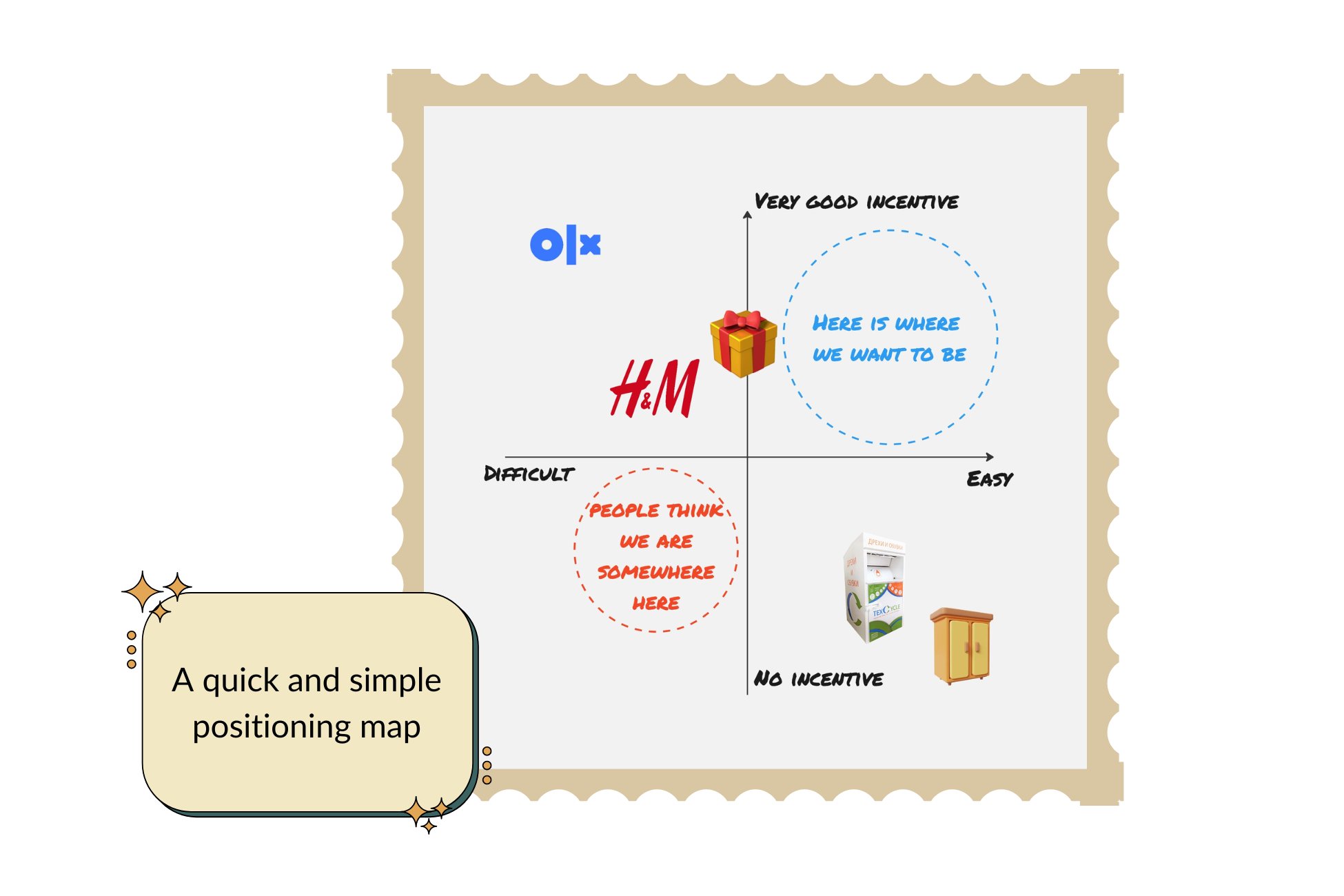
We are in a tricky situation where we want to position Clean Out as an easy option with a good incentive, but people perceive it as… the opposite.
Crazy 8's
Okay, back to UX. I used Crazy 8's to come up with some ideas, which my cat was against sharing with you:
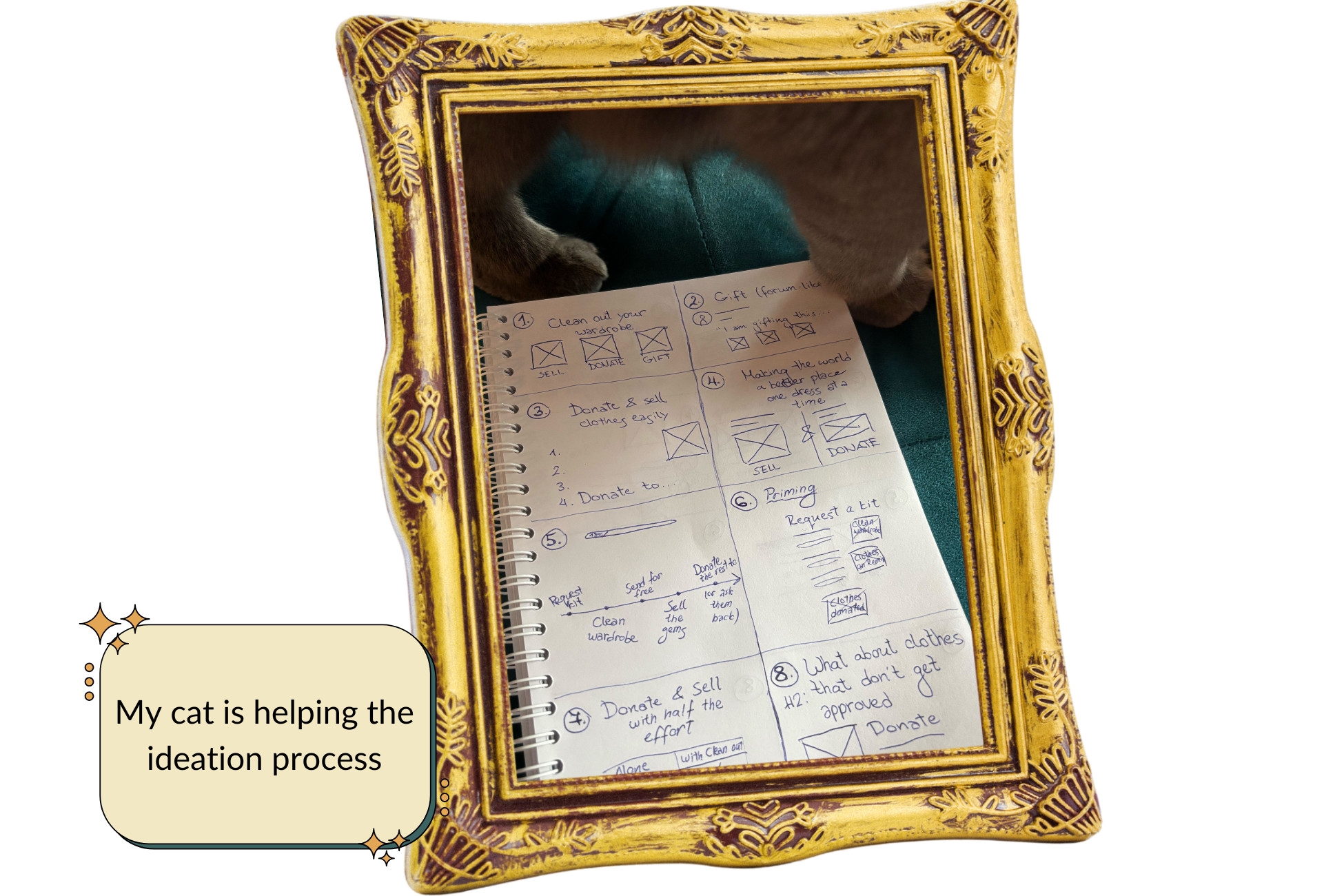
Anyway, I decided to go with these ideas:
1). Add a timeline to the Clean Out page

Why? It gives a clear idea of what the process is and what happens to the clothes if they are not approved (they can be recycled). Currently, a lot of users consider Clean Out a hassle because most clothes don't get approved, but if we manage to present this as something like "Sell the gems, recycle the rest", this shouldn't be such a big problem.
2). Add a comparison table to the Clean Out page
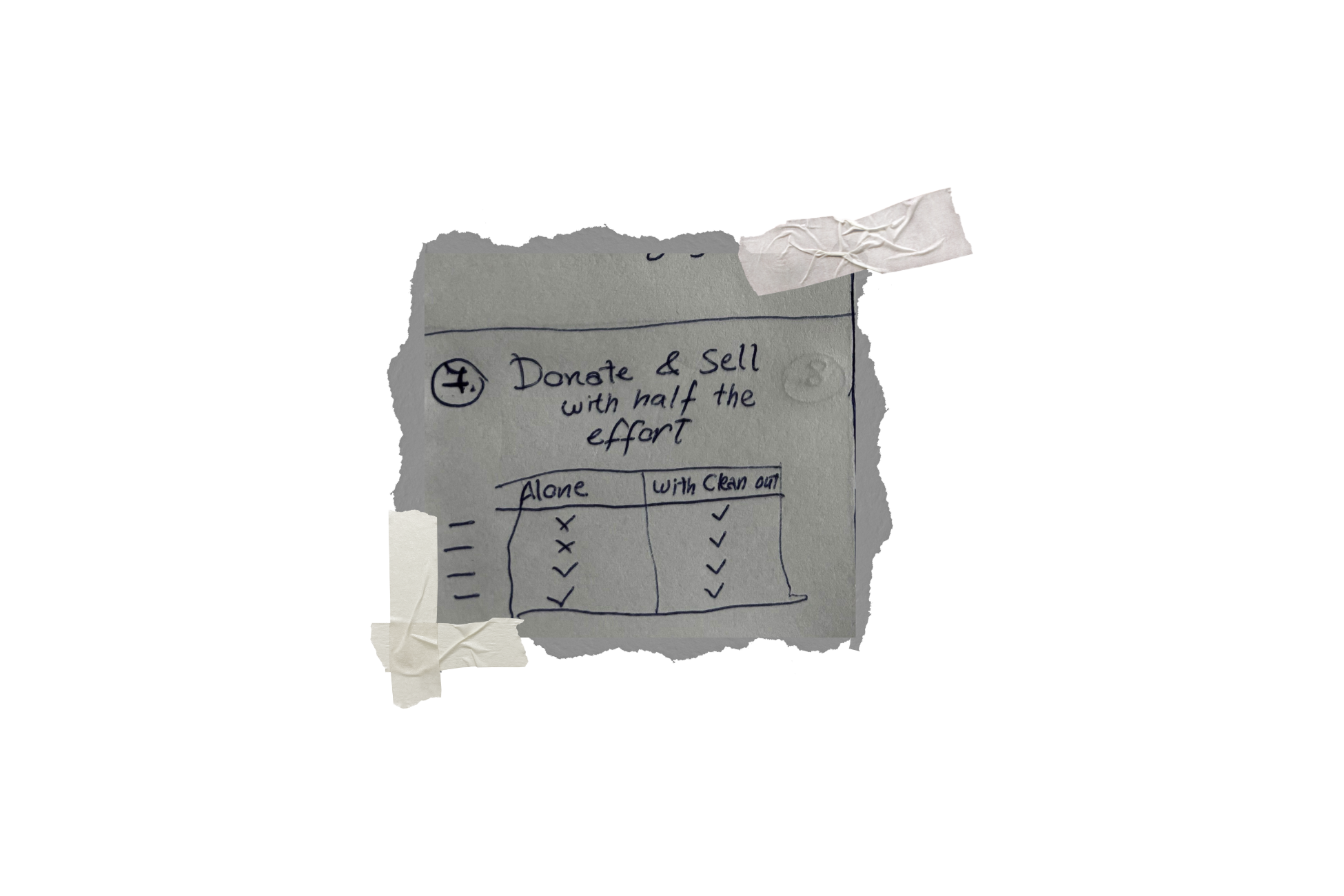
Why? It emphasizes how using Clean Out is easier and has a better incentive than the alternative.
3). Аdd social proof to the Clean Out page
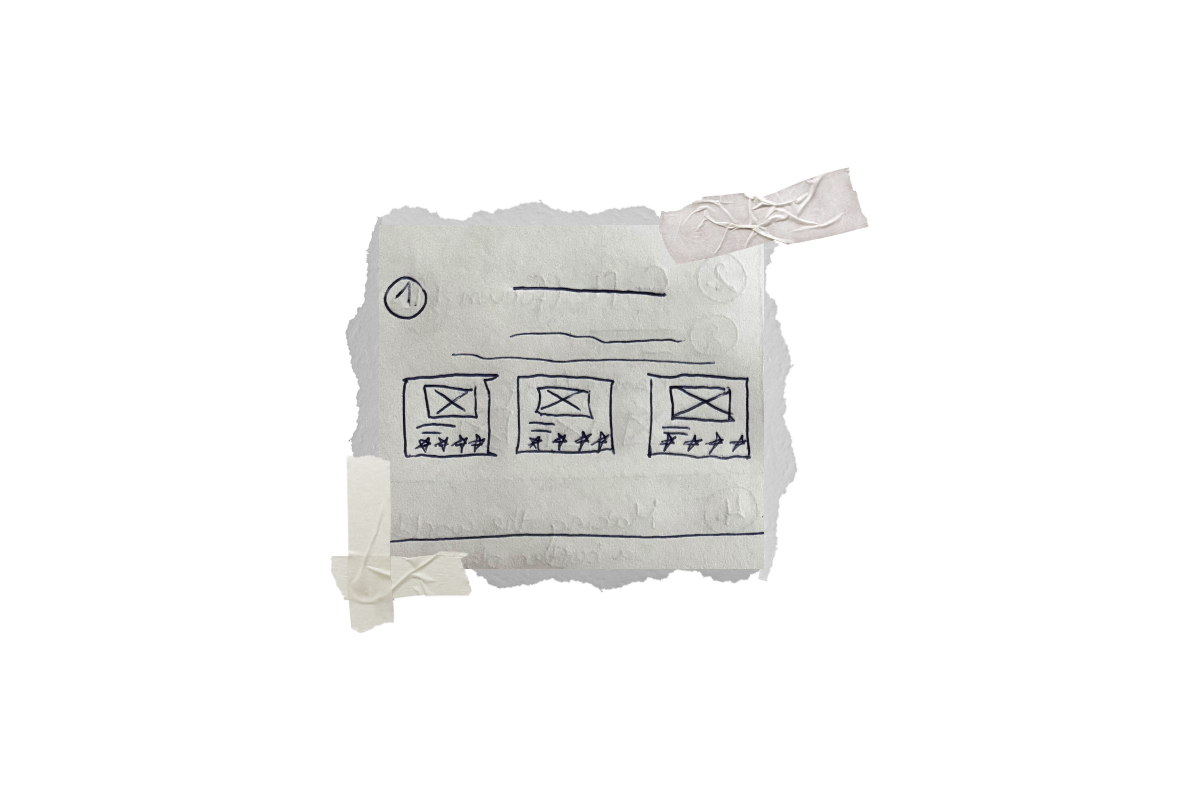
Why? To strengthen our claims. We establish more trustworthiness. Also because people seem to be questioning this service.
Designing
Okay, so we need a slight redesign of the Clean Out page for which I need to collaborate with the Product Marketing Manager. Since I don't have such, my PMM alter-ego will do it.
Product Messaging
To keep this as simple as possible, I will just add Mira's pain-points and issues in a table and map them to solutions, benefits and proof points.
| User pain point / issue | Solution / Feature | Benefit | Proof |
|---|---|---|---|
| Her wardrobe is cluttered and she doesn't know what to do with the clothes she wants to get rid of. | Sell to somebody else. Recycle. | Declutter her wardrobe. | - # of clothes sold via Clean Out each day - Proof of recycling |
| Selling feels too complicated and time-consuming. | Remix evaluate the clothes, take the photos and publish the listing. | Mira doesn't have to do anything but send the clothes for free. | - Social proof - Timeline - Clothes review process details |
| Many of her clothes hold sentimental value, so she doesn't want to just throw them away. | - Sell to somebody else. - Donate the money from them to SOS Children's Villages | - Knowing her clothes live a second life. - Fulfillment from contributing to a greater good. | - # of clothes sold via Clean Out each day. - Testimonial from SOS Children's Villages. |
Next thing I did was to double check if the current messaging on the website supports each of these, and then as you can see, marked everything that isn't included in the current copy in red. The proof part is concerningly lacking from Clean Out's page.
Mid-fidelity Prototype
Back to designing, I imported Clean Out's current page into Figma and used the components and elements they already have, since I don't want to do a complete redesign, but to just tweak a few things here and there. Anyway, it took me 3 hours from sketching the wireframe to completing the mid-fidelity prototype.
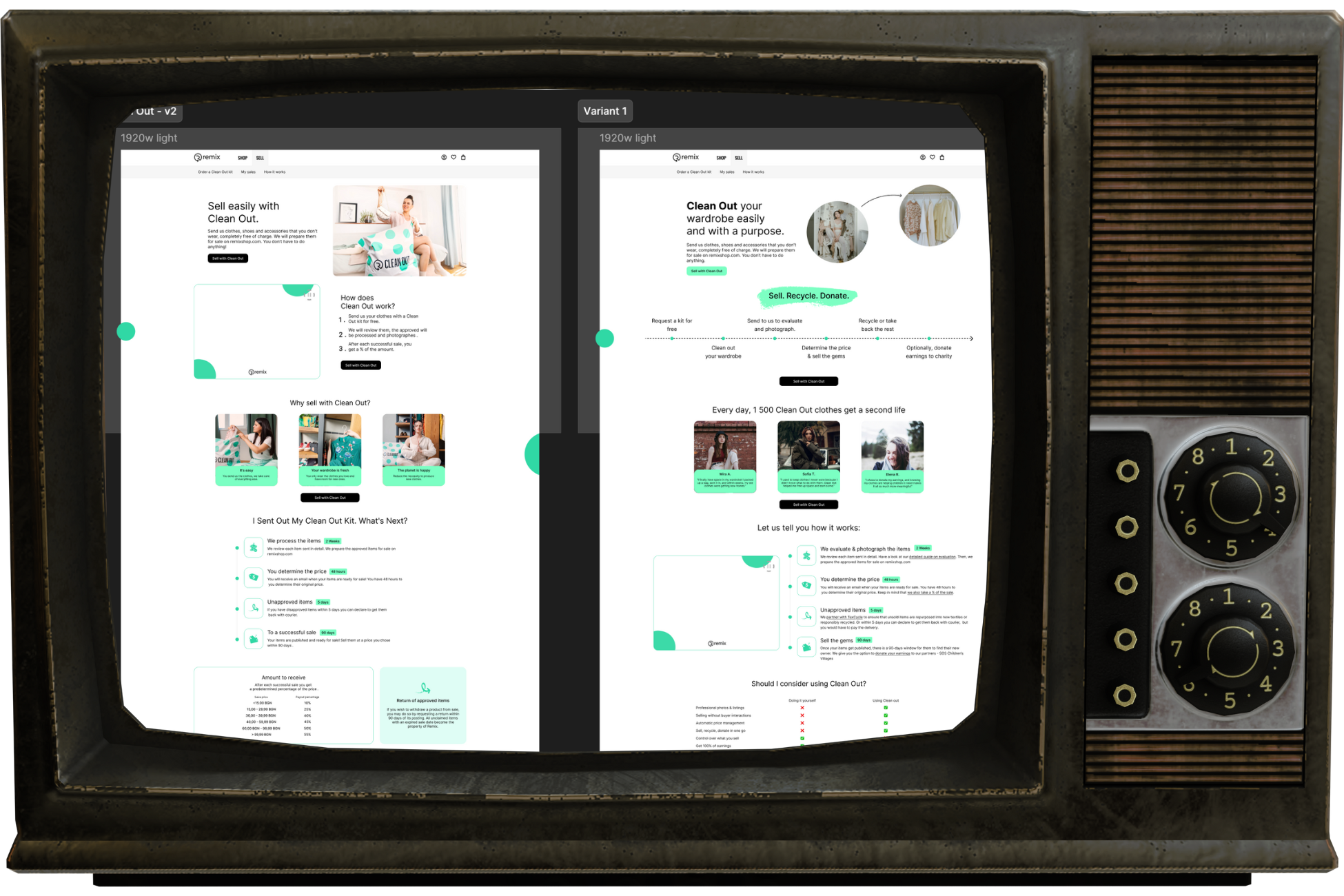
I didn't test earlier than this, because I had to find new participants to test the design anyway and at this point, it would have been challenging for me to ask people to test the designs at different stages (because of the lack of resources).
Testing the Design
Again, I did very amateurish research due to resource constraints. I asked participants (people who are interested in selling their clothes) to look at the two variants (of course not telling them which one is which) and answer the following questions:
- How informative was variant 1 regarding the service offered?
- How informative was variant 2 regarding the service offered?
- How trustworthy does variant 1 seem to you?
- How trustworthy does variant 2 seem to you?
- How willing are you to use the service described in variant 1?
- How willing are you to use the service described in variant 2?
- In general, what don't you like in variant 1?
- In general, what don't you like in variant 2?
Note that variant 1 is the redesigned page and variant 2 is the original.
Please, also note that these participants were different. The only screening applied was "Do you have an interest in secondhand shopping?", if yes, "Do you have an interest in selling your clothes?". In comparison to the previous group, these don't necessarily know about the existence of Clean Out and are not necessarily Remix.bg users.
Results
There were 5 participants in this test.
- 4/5 people rated the redesigned variant as "Very informative", which is the maximum on a scale of 1-5. 1 of the 5 participants rated the base variant as "Very informative".
- 3/5 people rated the trustworthiness of the redesigned variant as "Very trustworthy", which is the maximum on a scale of 1-5. The base variant was rated as "Very trustworthy" by 2/5 of the participants.
- 2/5 people claim they are "Very willing" (5 on a scale of 1-5) to use the service promoted in the redesigned variant. The other 3 people rated their willingness as 4 on a scale of 1-5. The base variant received scattered results - 1 person rated it 2, 1 person rated it 3, 2 people rated it 4, and one person rated it 5.

To summarize, we can see that:
- The redesigned variant is perceived as more informative.
- Both variants are perceived as trustworthy, with the redesigned one having just a slight advantage.
- People are slightly more willing to use the service presented on the redesigned page, even though it is the same service as in the base variant.
This means that my little redesign seems successful, but of course, this is not an A/B test. :) Now, let's look at the answers to the other questions.
In general, what don't you like in variant 1?
In general, what don't you like in variant 2?
Any other comments?

I could group them into 2 findings:
- 3/5 people mention that the way the steps have been presented in the redesigned variant is more optimal.
- 2/5 people mention the pros and cons table. One of them says they find it useful but some of the copy isn't clear. The other one says that the format is a bit too aggressive in their opinion.
Tweaking the Design Based on the Results
As a final touch, I will tweak the table just a little, to see if it can be improved. It started from this:

And ended up like this:

Ok, I am kind of happy with it.
So is this it?
In short, no. Not to mention this needs way more testing. People say some things but do different things. In the real corporate world, we'd have brainstorming sessions after the UX research. We'd try to find solutions to all identified issues, such as the lack of good incentives or the negative word-of-mouth. Here's one idea that my husband suggested:
Add a "Sold by" label on items on Remix.bg

Why? To begin with, the Remix buying platform is a medium where we know that our users are already engaged. We know that most users do enjoy buying clothes from Remix, so we can subtly hint that these clothes come from people who sold them via Clean Out. This way we'd emphasize the purpose of selling clothes on Clean Out: they will make somebody else happy. It also turns buying and selling clothes into a more human activity, we are focusing more on the community and the people side of things, which we also know is important for our users.
This is just a simple demonstration of how collaboration is the most valuable part of the process. And as much as I would like to also talk about product management, task prioritization, and doing more testing… it won't be worth much without the valuable context of a team and data.
